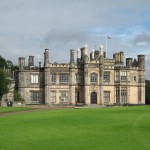WordPress database error: [Got error 28 from storage engine]
SELECT t.*, tt.*, tr.object_id FROM wp_terms AS t INNER JOIN wp_term_taxonomy AS tt ON tt.term_id = t.term_id INNER JOIN wp_term_relationships AS tr ON tr.term_taxonomy_id = tt.term_taxonomy_id WHERE tt.taxonomy IN ('category', 'post_tag', 'post_format') AND tr.object_id IN (19718) ORDER BY t.name ASC
Clan Primrose History
This name Primrose is taken from the lands of Primrose in the parish of Dunfermline. It has been suggested that it originally came from the old British, “prenn rhos”: meaning “tree of the moor”. The Primroses were well settled in Fife, around the Abbey of Culross, by the fifteenth century. Henry Primrose had four sons and one daughter. Gilbert,his grandson, was one of the Ministers of the reformed church at Bordeaux,and afterwards of the French church in London. He was appointed Chaplain to King James VI of Scotland and Charles I, and became Dean of Windsor in 1628.
During the Civil War the Clan Primrose were Royalists. Archibald Primrose rallied to the banner of James Graham, 1st Marquess of Montrose. They joined him after his victory at the Battle of Kilsyth. He was the king’s lieutenant at the Battle of Philiphaugh, where he was captured. He was tried and found guilty of treason, and although his life was spared he was held in prison until Montrose was ordered by Charles I to disband his army and leave the kingdom. Primrose was released and knighted by the king. In 1648 he joined in a scheme to rescue Charles I from the English Parliamentarians, and although the plan was a failure, he survived to join Charles II on his march into England in 1651. The king created him a baronet. He fought at the Battle of Worcester and after Charles fled into exile, the Primrose estates were sequestrated.
They were restored in 1660, and Primrose was appointed a judge of the Supreme Court and Lord Clerk Register of Scotland. He took the title, “Lord Carrington”. He acquired the barony of Barnbougle and Dalmeny between Edinburgh and South Queensferry, which remains the seat of the family to this day. The Lord Justice General was succeeded by his son, Sir William Primrose, and his son, Sir James Primrose of Carrington, was elected Commissioner of Parliament for Edinburgh in 1703. In November of that year he was elevated to the peerage as Viscount Primrose.
The second Viscount died unmarried in 1706, and when his brother, Hugh, the third Viscount, left no issue,the title lapsed. Archibald Primrose, born in 1664 was the only son by the second marriage of Sir Archibald, who left to him the estate of Dalmeny. He was appointed a Gentleman of the Bedchamber after the accession of Wiliam and Mary. He was Commissioner of Parliament for Edinburgh from 1695 to 1700, when he created Viscount of Rosebery, Lord Primrose and Dalmeny. On the accession of Queen Anne he was advanced to the rank of earl. In 1707 he was a Privy Councillor,and was appointed a commissioner for the Treaty of Union. After the union he was one of the sixteen peers elected to represent Scotland in the House of Lords.
His daughter, Mary, married a cousin, Sir Archibald Primrose of Dunipace. His son, Jamres, succeeded as second Earl of Rosebery, but also claimed the dormant family title of Viscount Primrose. The third Earl was a representative peer, and in 1771 he was made a Knight of the Thistle. He died in 1814, when he was succeeded by his son, Archibald John, as fourth Earl of Rosebery. A Member of Parliament for Hellston and later Carlisle, Primrose was created a baron of the United Kingdom with the title of ‘Lord Rosebery’in 1828. Like his father, he was made a Knight of the Thistle, and three years later he was appointed Lord Lieutenant of Linlithgowshire.
Dalmeny HouseThe seat of the Chief of Clan Primrose is still at Dalmeny House in Dalmeny on the Firth of Forth in Scotland. The current Chief of Clan Primrose is Neil Primrose, 7th Earl of Rosebery.
Clan Primrose Posts
Quick Links to Clan Primrose Products from The Clan Shop







